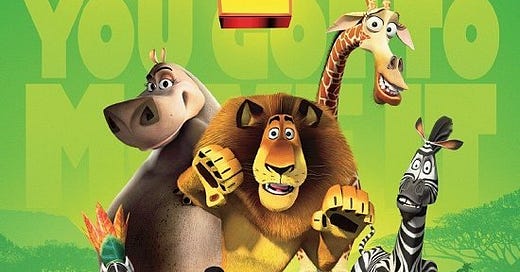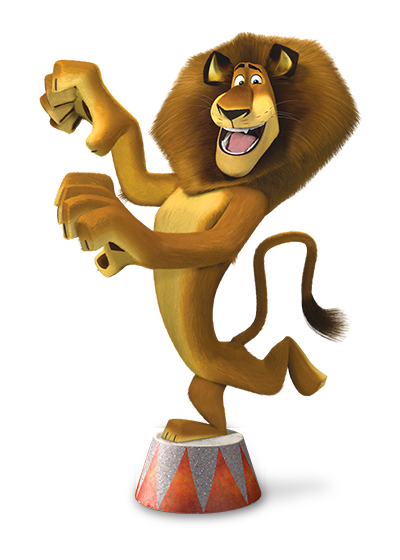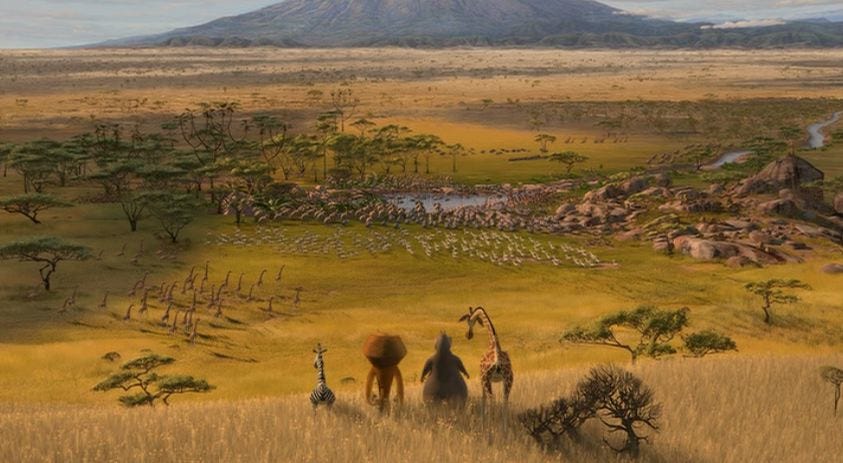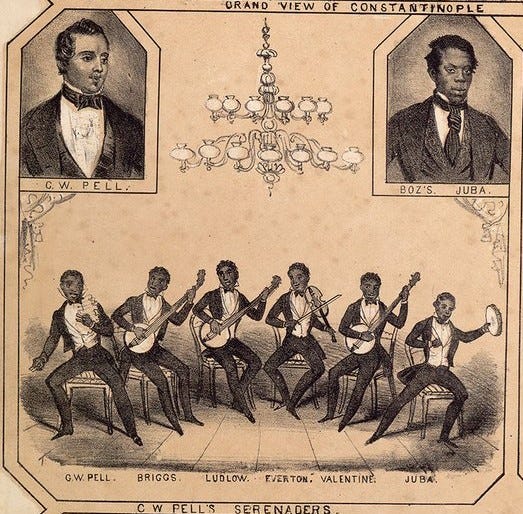Old School Disney: Madagascar 2 and Pan-Africanism
A tongue in cheek rewatch of animated classics
I like ‘em big. I like ‘em chunky.
In these near-immortal words, musician will.i.am professed the beauty of thick women years before the body positive movement became a worldwide phenomenon.
The Madagascar 2 soundtrack is the first and last film soundtrack I ever bought. Remember the days? When you had to pay 99p for a song and maybe up to £14.99 for an album on Apple Music? The days when we actually owned something (digitally) rather than paying a platform money every month to retain the privilege of listening to music we enjoy?
I don’t 100 per cent remember why I bought it but I suspect it was because will.i.am was all up and through the album. It was the early 2000s and I was a Black Eyed Peas fan - in part because my dad had burned all of their songs on a CD for me and after hours and hours of repetition I could recite Where Is The Love bar for bar.
Apparently will.i.am got the Madagascar 2 gig because of Justin Timberlake - of recent “what tour? the world tour” fame. He got to work with Oscar-winning composer Hans Zimmer on the soundtrack and the opportunity to play a character called Moto Moto.
I was reminded of Moto Moto, and his portrayal by will.i.am, this week while watching Love Island USA.
On Twitter, the #loveislandusa is dominated by haters of the current villain of the show - Connor. People think he did a fellow contestant, Jana, dirty but moving to one of her best friends in the villa - Leah - as soon as Leah became single. So, naturally, near-everyone using #loveislandusa is now referring to him as Moto Moto because they think he looks like him - in a move not too dissimilar to when Jordan from Love Island UK Season 5 was compared to Shrek (Jordan has since had a major glow up).
I started seeing the Moto Moto tweets on Friday. A few days earlier though, the most interacted with Tweet on my “for you” page was a Tweet comparing a character from Bridgerton to Gunther and Tinka - characters from an early 2000s Disney show called Shake It Up.
The popularity the posts comparing Connor to Moto Moto and a Bridgerton character to Gunther and Tinka forced me into a life-altering realisation. My generation are the adults now. We are the elderly people who love to look at culture through the lens of the past. We have taken over from the geriatric millenials and are now the ones making references on Twitter that are entertaining to us, born in the 1900s, but are lost upon those born in the 21st century. Our childhood classics are just a few years away from being referred to as “really old” in popcorn filcks.
Welp.
Like the elderly person I am, I recently went back to rewatch Madagascar 2 and cling to memories of the past. What I saw was an exercise in Pan-African praxis that shockingly few people online seem to recognise. Walk with me.
Little baby Alakay is playing with a butterfly somewhere on the African savannah before a moving rope catches his attention instead.
His dad, distracted, has not yet taught Alakay to avoid the devious tricks of poachers who soon kidnap him. His dad chases after him but in the tussell a crate carrying the lion cub falls into the ocean which transports the baby all the way to New York. That’s right - Alakay TRAVELS FROM AFRICA IN A WOODEN VESSEL ACROSS THE ATLANTIC.
In New York he’s taken to Central Park Zoo where he learns to get praise and affection through performance.
Through a series of hijinks (that happen in the first Madagascar film) Alakay, and some of his Zoo friends, end up in Madagascar. Another set of hijinks brings Alakay back to his continental African homeland.
He falls in love with its beauty but, after reconnecting with family, struggles to fit in. He doesn’t understand the old traditions and when he tries to showcase his Western ones he’s told he’s not a “real lion.”
He also discovers that his so-called fans from New York would happily roast him on a spit and eat him if needs must.
It’s only when he dances for them again that they spare his life. In doing so, he also inadvertently saves his African homeland from drought.
Alakay the lion - who has his named anglicized to “Alex” in the Western world - is like many of us who live in diaspora. We have African roots but are not familiar with many of the customs of our ancestors. Some on the continent say we’re not African enough and some of us even deny that we’re of African descent in the first place.
Additionally, in the Western world, many of African descent enjoy money and fame by hamming it up for non-Black audiences. Perhaps the most infamous example of this is minstrelsy.
Minstresly developed in the antebellum United States. During that time, all-white performance troups, performing in Blackface, put on shows that platformed caricatured interpretations of Black life. Performers used burnt cork to darken their faces. As time went on, Black people started performing in minstrel shows too - as “Ethiopian” minstrels. They again further darkened their faces and performed Black streotypes.
Alakay, in the tripart Madagascar film franchise - dances for tips and praise from humans. Humans who would otherwise be scared of him or abuse him. Maybe it’s too harsh to liken what Alakay does to minstrelsy but his survival among New Yorkers does appear to be predicated on him putting on a performance so he can remain a “good kitty” (aka “one of the good ones”).
But I say that Madagascar 2 is a film about Pan-Africanism because while Alakay performing as a means of survival may appear problematic, it does end up saving his homeland. The film therefore teaches us that when continental Africans and diasporans come together we really can build a stronger Africa.
Remember that the next time you listen to I Like To Move It on Spotify.
The Seun Speaks Substack was written in front of a live studio audience…(it wasn’t but, as someone whose favourite show growing up was Kenan & Kel, it just feels right to end the post this way)















